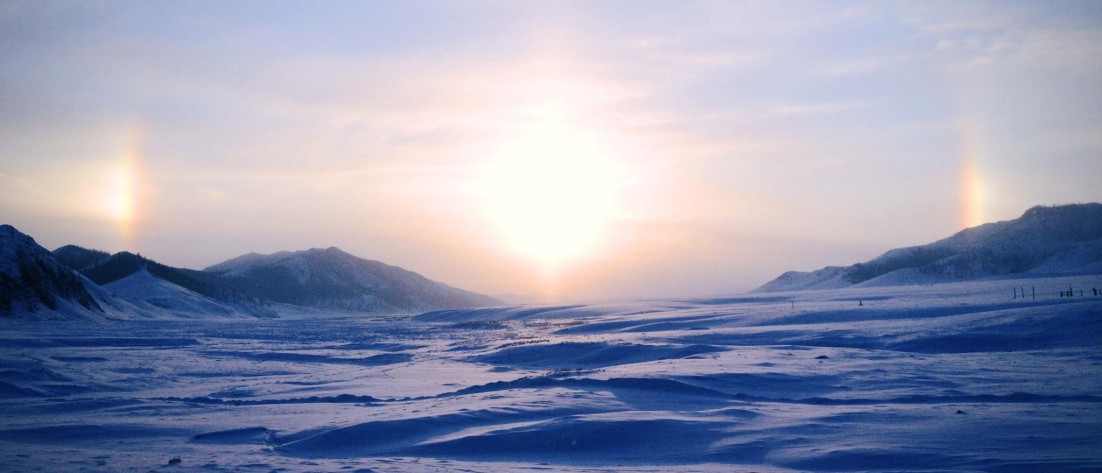One of the immediate difficulties of learning Mongolian – after tackling the unfamiliar Cyrillic characters – is the presence of a number of sounds that just don’t exist in English. For a beginner, it’s often difficult to hear and identify these sounds, much less reproduce them. A simple phrase like “Aнгли хэлний багш байгаа юу?” (Angli khelni bagsh baigaa you?, or Is there an English teacher here?) become unreasonably terrifying when you’re suddenly faced with an array of hissy, guttural sounds you don’t normally equate with speech. Once you actually learn to recognize these sounds, though, things get a lot easier.
Below, for your pronunciation practicing pleasure, is a list of some of the trickier sounds in the Mongolian language maze.
(Headings format: Cyrillic letter, /the most closely associated English phoneme/, [representation in the International Phonetic Alphabet], English transcription. Confused by the brackets? Linguists use square brackets to enclose speech sounds and slashes to enclose phonemes, or meaningful sounds. In this post, that means that “s” is written as [s] when I mean the sound and /s/ when I mean the letter or concept.)
Х, /h/, [x]; transcribed kh or h
I was familiar with this sound before attempting to learn Mongolian, having grown up hearing words like challah, tuchus, and chutzpah (not to mention Chanukah), but many English speakers aren’t. It’s a velar fricative – a sound made at the back of your throat by allowing air through a channel so narrow it causes a lot of turbulence. (Examples: [f,s,z] are all fricatives; so are [ð] and [ө], the /th/ sounds.) Most of us have come across this sound at some point (who hasn’t heard of Bach?), and it’s not particularly hard to make. In standard transcription, though, it’s rendered as kh to represent its difference from the English /h/, and this causes problems for innumerable tourists who insist on pronouncing the k.
When saying words like Darkhan, just throw in a little extra vibration at the back of your throat for the /h/; if you can’t manage that, just say it like a normal English /h/. You’ll sound a lot less silly than that tourist asking how to get to “Dar-con.”
Ц, /ts/, [ts]; transcribed ts
Alright, so this one’s sort of cheap, because we have the [ts] sound in English even if we don’t have a single letter for it: Pittsburgh. Cheats. Gutsy. Pizza – well, close enough. You get the idea. The problem is that English does not allow syllables, much less words, beginning with [ts], and Mongolian has plenty. As a result, English speakers will pronounce one sound but not the other when saying a word that starts with ц, rendering цамц as “tamts” and цагаан as “sagaan.”
(Цагаан is difficult to say even for those who can manage the word-initial [ts], as the Mongolian /г/ is realized in a number of unfamiliar ways to which I’ll devote a separate post.)
Р, /r/, [r]; transcribed r
It’s not a /p/, and it’s not the flat American /r/ either; that one’s represented as [ɹ] in most dialects. The Mongolian /r/ is trilled, like its Spanish or Italian counterparts. Since I speak neither of those languages, I hadn’t had a whole lot of practice trilling my /r/s before I left for Mongolia. Needless to say, I’ve gotten a lot better in the past year and a half! I still can’t trill them without a vowel first, but luckily for me, most Mongolians have the same problem – that’s why the Mongolian word for Russia is Орос, or Oros.
Л, /l/, [ɬ]; transcribed l
Though л is always transcribed as l when using the Roman alphabet, the Mongolian /l/ sounds nothing like what we’d expect it it. It’s a hissy sound English-speaking friends have mistaken for /s/ or /t/, but that they never equate to /l/, and probably wouldn’t unless they spoke Welsh. The English [l] is a voiced lateral approximant; the Mongolian [ɬ] is an alveolar lateral fricative that Wikipedia says is technically voiced, though I’ve never heard it said that way and wouldn’t know how to voice it if I tried.
If the linguistic terms are meaningless to you, try this: put your tongue where you normally would to make the /l/ sound, between your front teeth and the alveolar ridge just behind them. Move the tip of your tongue behind that ridge, closer to your palate, and flare the sides outward a little. Blow air around the sides of your tongue without making your vocal cords vibrate. That’s the elusive Mongolian /l/.
Interested in the language I’ve spent the past 15 months trying to wrap my tongue around? More posts to come on the subject, under the Language Notes category. Also, I’d love some feedback on the readability of this post – I’m trying to make it approachable to those unfamiliar to the field of linguistics without losing the specificity of technical language.
It occurs to me that I haven’t actually written about the Cyrillic alphabet yet. If you’re unfamiliar with it, check out Polly’s post on the Russian alphabet over at A Girl and Her Travels – that should tide you over until I can write something about Mongolian Cyrillic, which is only slightly different.






